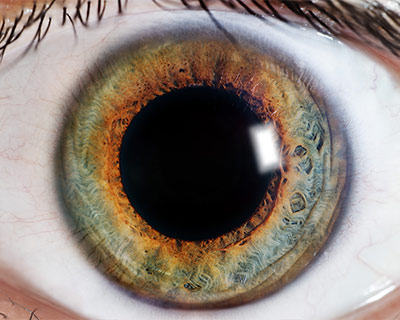People with a blinding form of retinal disease may regain their vision when a new treatment arrives in the form of gene therapy.
The U.S. Food and Drug Administration (FDA) has recommended approving a treatment for certain inherited retinal diseases caused by a mutation in the RPE65 gene. Mutations in that gene are responsible for early onset blindness from Leber congenital amaurosis, some forms of retinitis pigmentosa, and other conditions.
Gene therapy is when new genes are added to a patient's cells to replace genes that don’t work as they should, or that are missing altogether. The new genes are often carried into cells using a specially prepared virus. This works because viruses naturally introduce their own genetic material into cells in the same way.
 In clinical trials for Luxturna (voretigene neparvovec), data from the first randomized, controlled, phase 3 study showed that 27 of 29 treated patients (93 percent) experienced meaningful improvements in their vision, enough that they could navigate a maze in low to moderate light.
In clinical trials for Luxturna (voretigene neparvovec), data from the first randomized, controlled, phase 3 study showed that 27 of 29 treated patients (93 percent) experienced meaningful improvements in their vision, enough that they could navigate a maze in low to moderate light.
The patients who did not receive this therapy during the trials could not navigate the maze in low to moderate light, and did not have meaningful vision changes. However, in 8 of the 9 patients who chose to have the treatment after the study, their vision subsequently improved. They could move through the maze in low to medium light and had improved light sensitivity.
The study showed the treated patients kept their vision improvement for two years. However, researchers do not know how long they will maintain these gains.
Ophthalmologists are excited for the future of vision with gene therapy. At this time, medicine has no proven and approved treatments to offer people with vision-threatening inherited retinal disease. With approval of this first gene therapy, it may open the door to new treatments for other retinal diseases—from rare ones to common disorders like macular degeneration.
 The eyes have it when it comes to gene therapy
The eyes have it when it comes to gene therapy
To scientists and ophthalmologists, targeting the eye for gene therapy makes good sense.
The eye is a smaller organ and it is easy to get to. That makes implanting cells in them much easier than elsewhere in the body. Also, the eye is what is called immune-privileged. That means that cells implanted there are less likely to be rejected as they might be in other parts of the body.